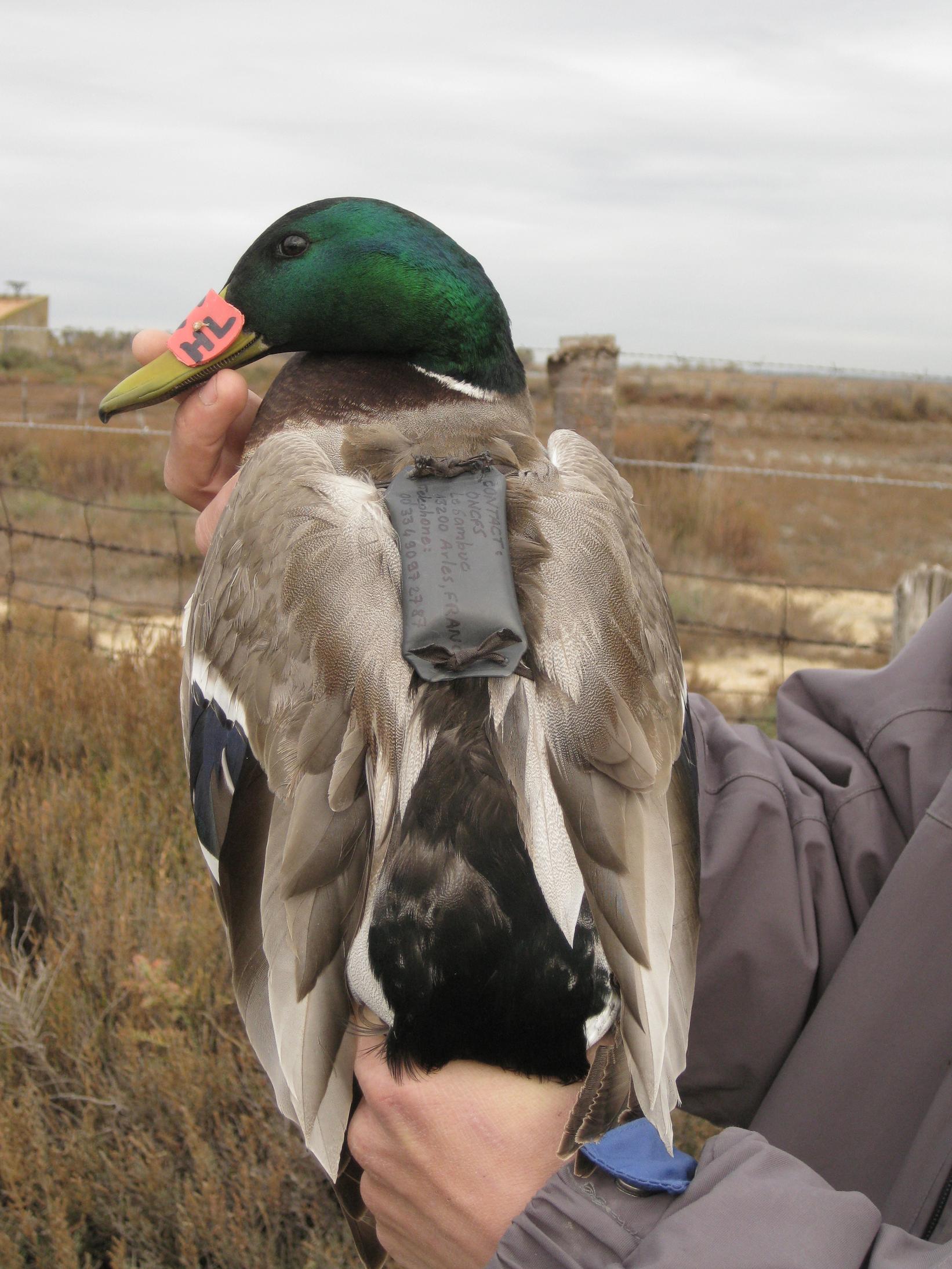As part of Jocelyn Champagnon’s thesis on the impact of releasing captive reared Mallards on the wild populations of this species, co-supervised and co-funded by the TDV, the ONCFS, and the CNRS-CEFE in Montpellier, GPS recorders have been in use for several weeks on Mallards in the Camargue, in collaboration with the IPHC-DEPE (Strasbourg) and the University of Kristianstad in Sweden.
 These devices weigh 23 grams and are carried by the ducks with the aid of a harness. They record the position of the individual at predetermined times over several months. Half of the devices were fitted to wild ducks, the other half to captive-reared Mallards initially released at the Vigueirat Marshes during the summer of 2010. The devices were attached when the birds were captured (or recaptured) during surface-feeding duck ringing sessions at the Vigueirat Marshes. The objective is to determine whether the artificially released ducks make use of space in the same way as wild birds. These devices only record the data and cannot transmit them. It is therefore crucial that we recapture the birds in order to download the recorded data, or that wildfowlers who shoot birds carrying recorders provide us with the devices. In most cases the GPS batteries may subsequently be recharged and the devices attached to another duck.
These devices weigh 23 grams and are carried by the ducks with the aid of a harness. They record the position of the individual at predetermined times over several months. Half of the devices were fitted to wild ducks, the other half to captive-reared Mallards initially released at the Vigueirat Marshes during the summer of 2010. The devices were attached when the birds were captured (or recaptured) during surface-feeding duck ringing sessions at the Vigueirat Marshes. The objective is to determine whether the artificially released ducks make use of space in the same way as wild birds. These devices only record the data and cannot transmit them. It is therefore crucial that we recapture the birds in order to download the recorded data, or that wildfowlers who shoot birds carrying recorders provide us with the devices. In most cases the GPS batteries may subsequently be recharged and the devices attached to another duck.
For more information:
Jocelyn Champagnon or Matthieu Guillemain
ONCFS – Tour du Valat – Le Sambuc – 13200 Arles
[email protected]
tel : 04 90 97 27 87